'Immortelle' at MO.CO. in Montpellier
To set the ball rolling, here's quite a long quotation from the English-language version of the leaflet handed out at the entrance to Immortelle, a big new exhibition at MO.CO. in Montpellier, subtitled 'Vitality of young French figurative painting':
I might as well get it down on paper straight off, so as to avoid any misunderstandings: Immortelle (Immortal) is a combat exhibition. The point is to affirm a simple truth in all its ramifications: painting is immortal. So it’s just as pointless to rejoice about its return, or to regret it, as it would be to ramble on about the death of literature or music. This assertion is accompanied by solidly grounded convictions.
No, the ‘Retinal painting’ reviled by Marcel Duchamp has never stopped producing masterpieces.
No, figurative painting is not reactionary and backward-looking.
No, France is not a country outside of history – the history that Germany, the United States and the emerging countries have never left behind – where painters have created nothing but amusing, decorative paintings.
No, Pierre Soulages is not the last great French painter.
Yes, over the last half-century our country has given birth to and has welcomed painters of talent and even genius.
Yes, these artists had to sail against the tide, discouraged by art schools, despised by institutions, mocked by the majority of influential critics.
Yes, resistance has paid off; yes, the youngest French painters are reaping the benefits of the uneven struggle that oppressed the previous generation; yes, the battle has finally been won; and no, its heroes have not yet been rewarded.
Yes, French painting today is enjoying a golden age.
We have conceived the exhibition Immortelle with the aim to reveal the uninterrupted vitality of young French figurative painting, as embodied by artists born since 1970. We are convinced that this buzzing, complex art scene was long overdue for some real attention from a major institution such as ours.
An odd feature of the contemporary art scene in France is the almost hermetic divide between an austere, intellectual, conceptual, publicly-funded art sector, and the commercial sector of galleries, fairs and sales. You have, on the one hand, French artists teaching in France's art schools, showing in and purchased by public institutions (such as MacVal), and in many cases little-known outside that particular, public-funded circuit, and on the other, artists earning their living by showing and selling in private-sector galleries and at fairs, in France and abroad. The artists are rarely the same, may never have heard of each other (except when pupils remember their teachers), and their art is, mostly, different in style. I personally tend to find the 'official' stuff colourless (which it often literally is), cold and sterile.
In particular, in France's public art institutions - as a more detailed essay in the exhibition catalogue states - it has seemed as if painting, especially figurative painting, was practically anathema: an irrelevant, moribund, art form, disregarded by the 'official' art sector:
'Deliberate hostility to to contemporary French painting has affected all institutional levels in our country, from education to exhibitions and acquisitions by museums supposed to be defending diversity (...) There are endless stories of young people signing on to learn to draw and paint at art school and finding themselves abruptly summoned to drop their pencils and brushes, those tools of the forces of reaction; Some (...) even left the country during or after their studies, in search of a less dull-witted ambience. Germany, where these theoretical dissensions were unknown and whose painting revival was dazzling the world, stood out as a refuge.'
It's surprising to see such a 'militant' reaction coming from a public institution: MO.CO. in Montpellier, and I suspect the exhibition and even more so the catalogue texts will stir up quite a kerfuffle.
My personal reason for making the trip to Montpellier was to honour the memory of David Caille (1986-2014), three of whose paintings were chosen by the curators for the 'younger' (born after 1980) section of the show, in the museum's 'Panacée' space. David, a hugely promising painter, was one of those who, feeling out-of-place in French art schools, left for Germany, in a stuff-of-novels move: he went to Düsseldorf, introduced himself to Peter Doig, showed him his portfolio and was accepted into his class. He shared a studio in Paris, not far from my flat, with Iranian artist Mamali Shafahi, and had a set of my keys, so he could come in after I'd left for work in the morning to have breakfast and use the bathroom: the studio, where he was sleeping on a couch, had only a sink with cold water. In a tragedy his friends and above all his family (present in number at the opening in Montpellier) will never get over, David took his own life in 2014, just before he was scheduled to take part in his first 'commercial' exhibition, Forever Young, at the Galerie Catherine Bastide in Brussels.
In 2017, to pay tribute to David and keep his memory alive, curator Gallien Dejean and artist Mathis Collins, both friends of his, organised a near-comprehensive retrospective of his work, Open Studio, at Treize in Paris. Art Viewer's photos of the whole exhibition are here, and Camille Azaïs' article about the show, published in French in Zérodeux, is here.
In April 2020, on the anniversary of David's death, I published (as every year) a few photos of his work on Instagram. Within less than a minute, illustrating the immediate impact of David's work on art-world professionals, I had a message from gallery-owner Guillaume Sultana: 'Qui c'est ?' (Who is it?). This eventually led to Guillaume meeting the Caille family, and to Paul Maheke including some of David's work in a two-part exhibition he curated at Sultana in Belleville, Yesn't. There it was that people from MO.CO. in Montpellier discovered David's work, and so it was that his paintings (above) came to appear for the first time at last, nine years after his death, in a major French institutional exhibition.
But of course (perhaps I should say 'fortunately'), in an overview of young French painting today, David wasn't the only artist I knew. The curators chose to blow up Rayan Yasmineh's jewel-like small painting of his brother, Cyrus et l'odeur du lys, to gigantic, poster proportions at the entrance to the show (photo at the top of this article), which also included the recent painting, similar in spirit, I mentioned in my post about ARCO in Madrid.
Rayan (see here) is rapidly becoming one of the 'usual suspects' when young French painters are under discussion, alongside Jean Claracq (another Sultana artist), whom I also wrote about when he was chosen to paint the poster for France's Roland-Garros tennis open in 2021.
It was nice to come across familiar faces among the crowd (in all, 350 works are on show; the catalogue, by the way, is nicely done and comes with an English translation at the back), and useful to have a chance to see a panorama of French painting today. But it occurred to me while there that the problem, with an exhibition of this kind, rather than one with a less general theme, must be that those not included will wonder why they were left out.
I'll end with a few more photos.
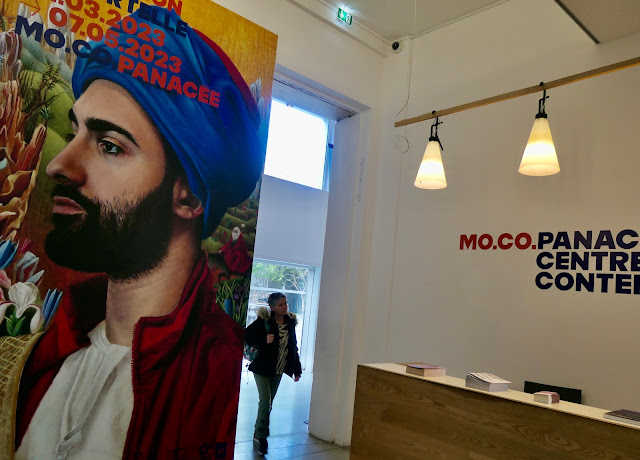
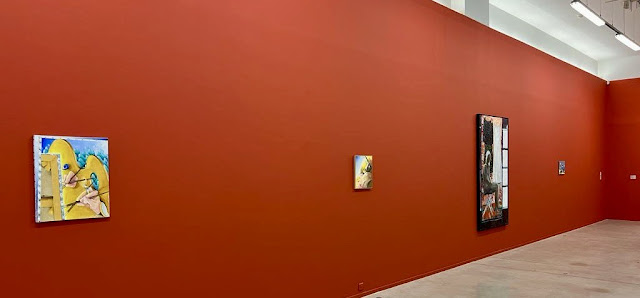



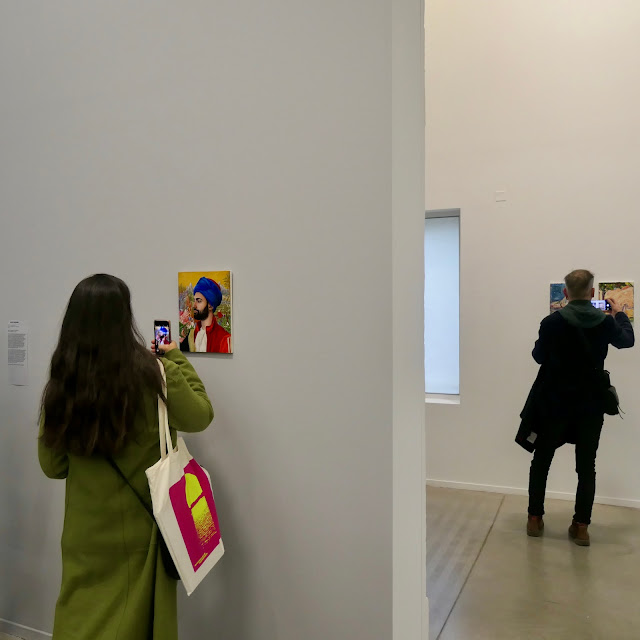



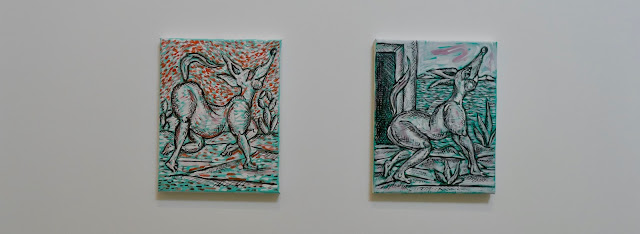

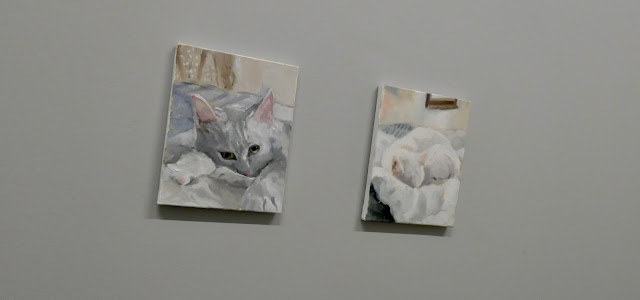








Comments
Post a Comment